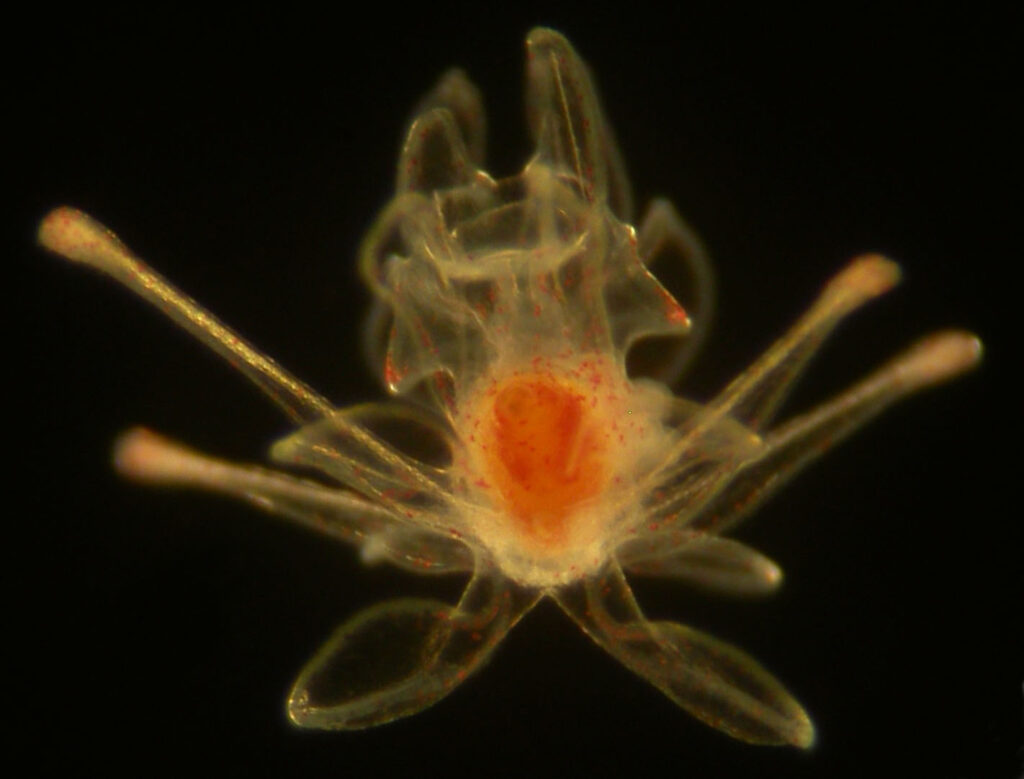
Larva of a pencil urchin, Cidaris blakei. During the Deepwater Canyons 2013: Pathways to the Abyss expedition, scientists collected several adults of these urchins with the hopes of bringing them back to the lab to spawn so that released eggs could be collected and (hopefully) fertilized in order to rear larvae.
Most larvae of benthic invertebrates have planktonic larvae. Some larvae spend weeks to months feeding in the water column before settling down and metamorphosing. Others do not feed and spend a short period of time in the water column before metamorphosis.
By raising larvae in the lab through metamorphosis, scientists can determine the larval period or planktonic larval duration (PLD). This PLD, combined with knowledge of the speed and direction of oceanic currents, can provide an estimate of maximum dispersal distance and trajectories and examine how these predictions relate to the biogeographic distribution of deep-sea species.
From: Life of a Larva.
